What Is Vertex and Vertex Edge?
Vertex is a DeFi platform that features spot, perpetual, and integrated money markets, powered by a hybrid order book-AMM design. Vertex launched Vertex Edge to improve liquidity efficiency through cross-chain liquidity aggregation that is displayed as a single synchronous order book.
Key Takeaways
-
Vertex Protocol is a multi-application DeFi platform first deployed on the Arbitrum network. It offers spot cryptocurrency exchange and perpetual trading services and operates a money market for cryptocurrency investors.
-
Vertex uses a hybrid central limit order book (CLOB) and Automated Market Maker (AMM) to develop a liquidity-efficient layer for the various financial services it offers.
-
In an attempt to solve the liquidity fragmentation issue, Vertex launched Edge, a cross-chain liquidity aggregation protocol that pools liquidity across multiple blockchain networks.
-
This article discusses Vertex Protocol, its key features, and how it works.
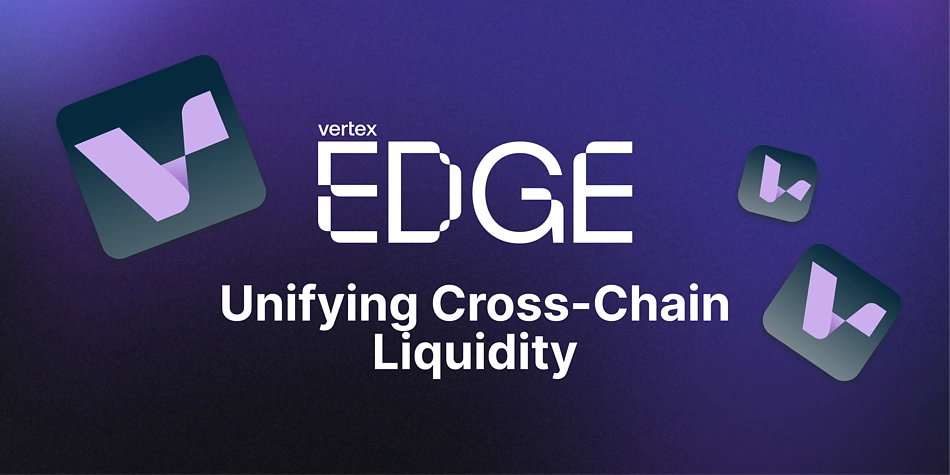
This article is brought to you by Vertex.
According to data from the official website, over $50 billion worth of crypto assets have been traded on Vertex by at least 20,000 unique traders. Vertex is a DeFi platform deployed first on the Arbitrum network. It uses a hybrid of the central limit order book (CLOB) and the AMM to manage liquidity across asset pairs and offer traders a liquidity-efficient platform for regular and advanced financial operations with low latency.
Vertex features multiple applications on its platform, including
-
A spot trading platform
-
A perpetual trading platform, and
-
A money market.

On the surface, the spot and perpetual trading platforms share a resemblance with traditional trading interfaces on centralized exchanges. This is thanks to the CLOB that enables a maker and taker pair to create price-specific liquidity across selected asset pairs by placing orders. However, Vertex is a decentralized self-custodial platform, where users retain full control over their assets.
On the spot trading platform, users can instantly swap supported crypto assets. On the perpetual trading platform, traders can take a long or short position with up to 10x leverage. According to Tokenterminal, Vertex’s derivative trading platform is the second largest decentralized derivatives trading platform by daily trading volume, only behind dYdX.
Vertex also operates a money market, where cryptocurrency investors can lend and borrow assets. Vertex employs the over-collateralization strategy and a dynamic interest algorithm to create a self-functioning money market for users. According to DefiLlama, the total value of assets locked on Vertex Protocol sits at over $51 million at the time of writing.
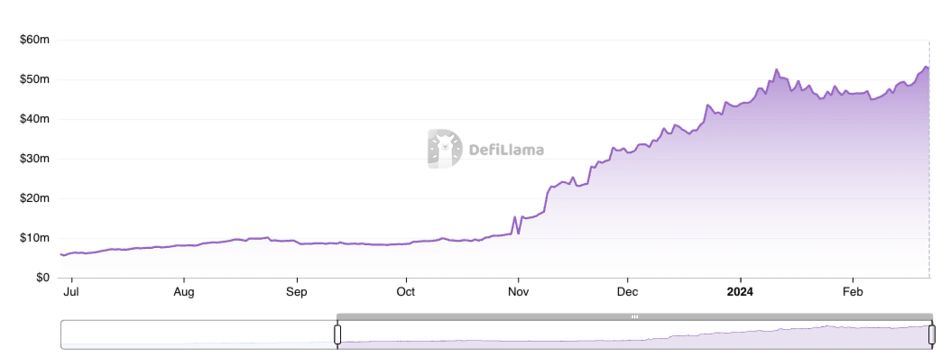
The Vertex Protocol is powered by the Vertex Token (VRTX).
VRTX Token
VRTX is the utility token of Vertex Protocol. According to the project, VRTX is meant to provide value to the users while boosting the general growth and health of the protocol. VRTX is used as a reward token for unique contributors to the project and VRTX stakers.
Activities eligible for VRTX rewards include regular trading on the platform, liquidity provision, user referral, and other off-chain marketing activities. Staking VRTX is also regarded as a contribution to the platform’s security and stakers are rewarded for this service using new emissions from the total supply,

The total supply of VRTX is 1,000,000,000 (one billion). According to the project, about 90% of the total supply will be distributed over a period of 5 years.
VRTX currently trades on decentralized exchanges on the Arbitrum network and centralized exchanges like Kucoin, Bitrue, Gate exchange, and Bybit. See active VRTX trading pairs.
How Does Vertex Protocol Work?
The core role players in the Vertex Protocol system include:
-
The Vertex hybrid CLOB and AMM order book design
-
A decentralized oracle network
-
A liquidation protocol
-
Low gas fees and MEV-resistance powered by optimistic roll-up technology.
The Vertex Hybrid CLOB/AMM
Most DeFi protocols utilize either AMMs or CLOBs. AMMs (automated market makers) serve exchange requests using liquidity pools which are crowdsourced pools of the paired assets that are used to facilitate trades on decentralized exchanges, while CLOBs use decentralized matching engines to serve trade requests, pairing maker orders with takers’ orders.
Decentralized order books work similarly to centralized order books used by centralized exchanges; the only difference is the underlying technology that allows multiple control points for CLOBs. Compared to AMMs, central limit order books (CLOBs) are high throughput systems but are resource-intensive, requiring more sophisticated technologies.
Vertex claims to fuse the strengths of AMMs and CLOBs to create a more efficient system. On the order book, users can submit trade requests, specifying a price level at which they wish to trade their assets, while liquidity providers also commit assets to the AMM. The protocol puts both systems to use as specified by the underlying algorithm.
Vertex Protocol uses an off-chain sequencer to match orders. It compares the price offers from the AMM and the order book, selects the best available price, and matches the trades with low latency. The high-speed matching engine completes trading requests within 10-30 milliseconds.
The AMM arm of the hybrid matching machine serves, not only as a complementary system to the CLOB but also as the protocol’s base resort. Depending on the state of the protocol, the matching engine can switch fully to AMM. Situations like this include when the sequencer experiences downtime or other unfavorable conditions for the CLOB. This is known as the Slo-Mo mode.
This offers a scaling solution to the protocol, ensuring that user experience stays positive regardless of the protocol and market condition. The pooled liquidity (order book + AMM) also makes for a liquidity-rich system, where the flexible matching engine leverages available resources according to the market and protocol’s conditions.
Vertex’s off-chain sequencer is currently operated by the Vertex Protocol team, however, according to the available information this facility will be moved to a community-control arrangement through Vertex governance.
Price Feeds Powered by Decentralized Oracles
Vertex Protocol uses multiple oracle networks to provide off-chain data to the protocol. It uses Stork alongside ChainLink DON. The goal is to create a low-latency, accurate, and cost-efficient data system for the protocol that contributes to the dynamic system it offers.
Vertex’s Liquidation Protocol
Vertex runs a money market and a perpetual trading platform. Liquidation is vital for both applications. The liquidation protocol is deployed on the money market to salvage ‘bad loans’ and keep the system running. It handles the repayment of borrowed assets and the claiming of the borrower’s collateral as seen in other lending protocols.
The liquidation protocol also performs a similar role on the perpetual trading platform when a trading position reaches the liquidation point. On the perpetual trading platform, the liquidation protocol closes the trade and claims the trader’s collateral to prevent further losses for the trader and the system as well, ridding the system of low-health loans and margins.
Low Gas Fees and MEV-Resistance Powered by Optimistic Roll-up Technology
Vertex Protocol is deployed on Arbitrum, a Layer 2 network, offering users a more cost-efficient fee structure as Layer 2 networks are known to offer higher transaction throughput for lower fees than the main network.
Vertex Protocol also claims to be MEV-resistant. Major contributors to its MEV resistance are the sequencer’s low-latency transaction matching and Arbitrum network’s optimistic rollup technology. Vertex Protocol claims that the sequencer computes transactions in less than 20 milliseconds, giving MEV bots little time to act.
Also, the roll-up technology batches transactions periodically, submitting thousands of transactions to the mainnet at once, which contributes to the MEV resistance. Moreover, the roll-up’s transaction batching is especially vital for the AMM arm of the hybrid CLOB/AMM.
Vertex unites these key role players to deliver a unified DeFi platform. The central limit order book and AMM hybrid provides the base liquidity for the protocol, while the sequencer routes the resources accordingly. The liquidation protocol maintains the system’s health and the anti-MEV features ensure that users pay a fair fee while using the platform.
Vertex Protocol is developing as the project explores enhanced applications of its current solutions to improve performance and promote the adoption of decentralized financial solutions. Vertex Edge is the latest development from the project.
What Is Vertex Edge?
On February 6, 2024, Vertex announced Vertex Edge. According to the project, Vertex Edge is an upgrade to the off-chain sequencer that turns it into a multi-chain protocol for pooled liquidity and settlement of financial transactions. It is a parallel EVM implementation of the Vertex sequencer.
The current implementation of the sequencer limits it to a single chain, Vertex Edge takes this solution abroad. Vertex Edge splits the sequencer across different networks; each deployment of the sequencer is known as an instance (Vertex Edge Instance) transaction from each instance is settled on a unified liquidity layer, which pools liquidity across chains. The sequencer presents the Maker orders from each of the chains and pairs the Taker order from the Vertex instance with the best Maker order on the sequence.

According to Vertex, Edge is a synchronous order book liquidity layer that unifies cross-chain liquidity in DeFi.
Vertex Edge and Synchronous Order book Liquidity Between Chains
The total value locked on DeFi protocols is over $80 billion at the time of writing. With such a figure, you’d expect most DeFi protocols to be liquidity-rich. But this is not the case, as the liquidity distribution across DeFi is highly fragmented, where liquidity exists in different zones and cannot be optimized.
What Vertex is proposing with Vertex Edge is a flexible liquidity layer that can scale horizontally, bringing together liquidity across different networks, creating a unified layer for DeFi liquidity. For example, Takers can have their trade requests executed on any of the supported networks without needing to bridge to the network.
Vertex also claims that Edge retains the low latency of the current implementation of the Sequencer and will be able to satisfy trade requests within 5-15 milliseconds, even when the transaction is settled on a slower network. Vertex also shared plans to start the roll-out process of Vertex Edge by deploying the instances on other non-Arbitrum networks. The first instance of the Vertex Edge, known as Blitz, will be deployed on the Blast network.
Blitz: The First Vertex Edge Instance Built on Blast
Blitz is the first instance of Vertex on another Layer 2 – Blast. This will be the first non-Arbitrum Edge instance and will operate alongside the original sequencer on the Arbitrum network, according to Vertex. Blitz will be developed with the same or similar UI as the original deployment on Arbitrum.
More importantly, the liquidity presented on the platform is cumulative of the liquidity on the Arbitrum and Blast network. Blitz users can execute transactions on the platform like the usual DEX. However, with Vertex Edge, Blitz users’ transactions can be settled using orders from the Arbitrum instance while the protocol maintains a low latency execution speed. Therefore, Blitz is not just a cross-chain deployment of Vertex Protocol, but an interoperable extension of the protocol. This is expected to not only present users on the Blast network with a liquidity-rich DEX from the onset, but also complement the liquidity conditions on both networks.
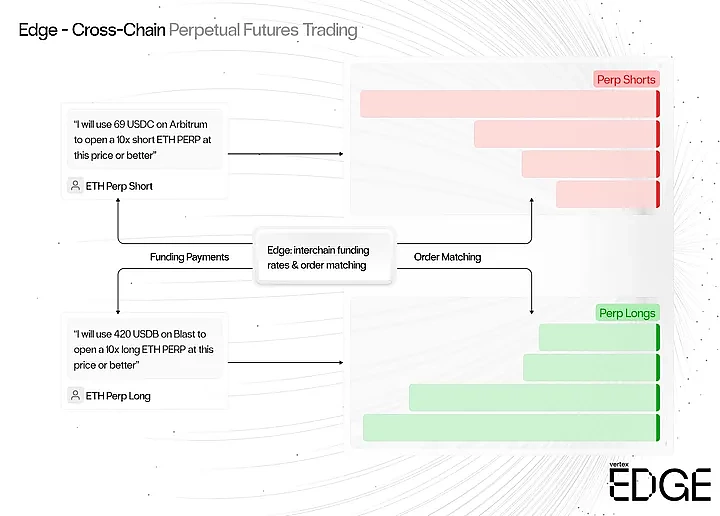
At launch, Blitz will have the key features of Vertex Protocol including the spot and perpetual trading platform with up to 30 trading pairs, the money market, low trading fees for takers, and low latency order matching. The Blitz testnet is already live on the Blast testnet. According to the announcement, Vertex will proceed with further deployments on other Layer 2 networks in the future.
Final Thoughts
With the introduction of Edge, Vertex sets its sights on solving another important issue plaguing DeFi as a whole: liquidity fragmentation. A significant percentage of the total DeFi TVL is stuck on chains where they are sparsely used or not used at all, and Edge looks to solve this by aggregating and unifying liquidity across all Vertex Edge instances in a synchronous order book liquidity layer.
Always do your own research and adopt risk management strategies before interacting with any protocols and investing in cryptocurrencies. This article is only intended for educational purposes and should not be taken as investment advice.

CoinGecko's editorial team comprises writers, editors, research analysts and cryptocurrency industry experts. We produce and update our articles regularly to provide the most complete, accurate and helpful information on all things cryptocurrencies. Follow the author on Twitter @coingecko



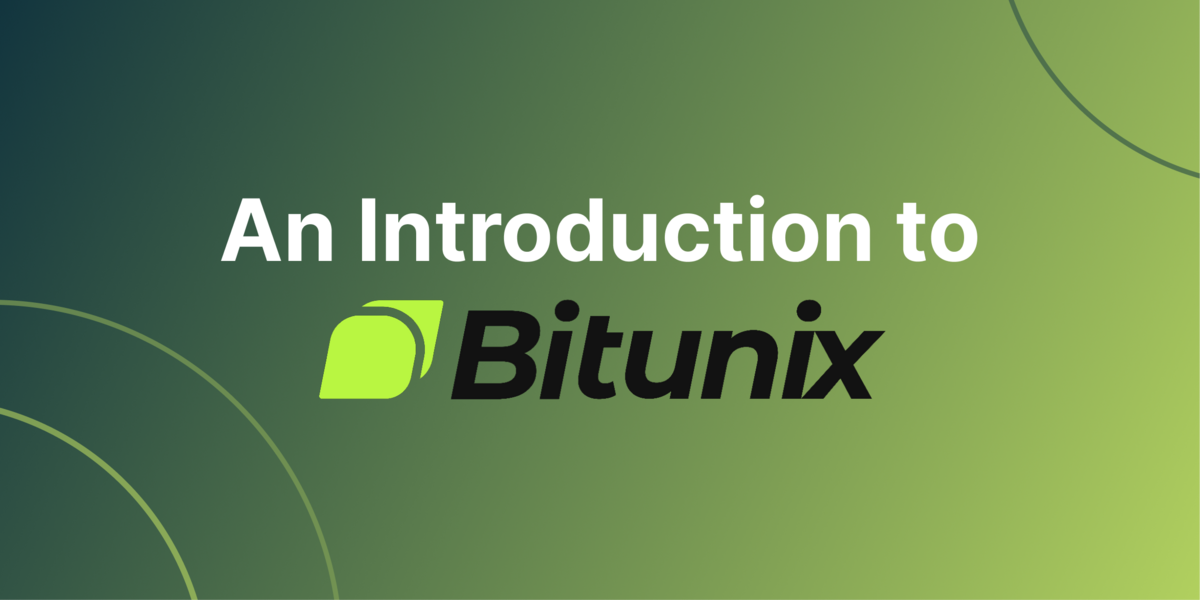
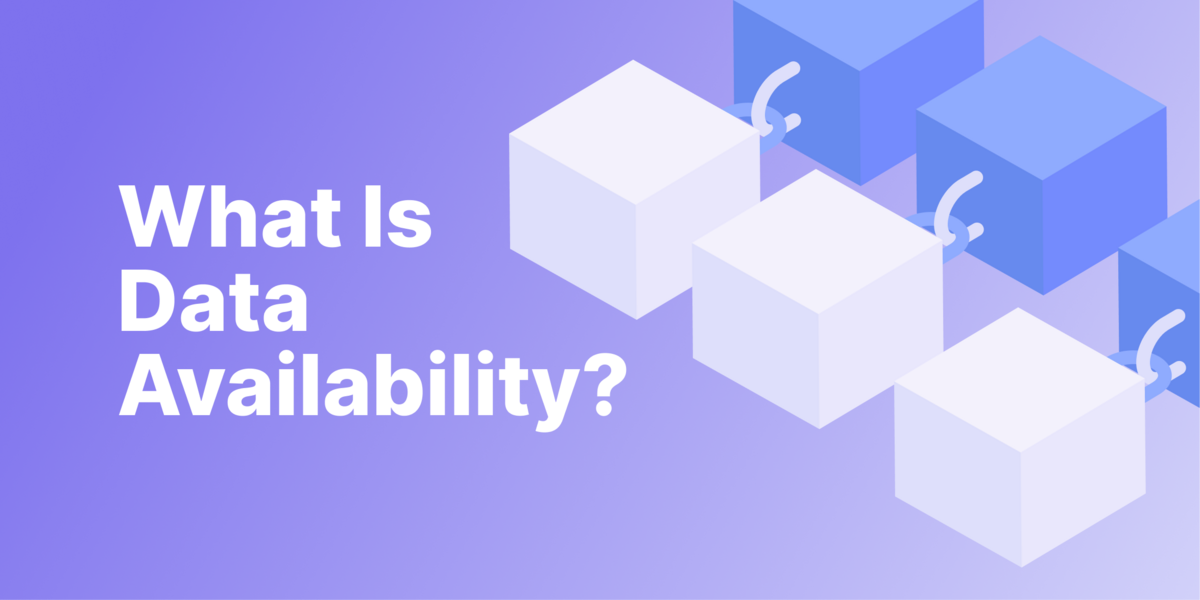




 Or check it out in the app stores
Or check it out in the app stores